One afternoon after school I grabbed a paintbrush and joined a group of seventh-grade boys in my classroom who were painting presidential campaign posters and banners for an upcoming mock election. As we painted, I learned a lot about them. Eddie, the charismatic leader of the group, shared his concerns about the unfair way his wrestling coach was treating some of the athletes. He also expressed frustration about his older brother who he viewed as “really smart but slacking off in school.” Other boys also disclosed issues in their personal lives. Ben described his father’s high expectations for him. Jamal explained he was worried about a family member dealing with a serious illness, and Seth revealed that his family was stressed over his father’s unemployment.
I was surprised with this conversation given these same young men had so often responded to serious class discussions with grunts or silence. Eddie and his friends taught me an important lesson. Their involvement in an enjoyable hands-on activity apparently enabled them to be more at ease talking about important issues in their lives (Hébert, 2006). That same year I learned more from a group of high school males. On a field trip to a major city, I was able to engage in serious conversation as we negotiated the subways and walked the city streets from one museum to the next. The notion of talking as we walked side by side was similar to what I had learned from Eddie and his peers.
I reflected on my own experiences as an adolescent, and I realized how wise my parents had been. When my mother put me to work chopping vegetables for beef stew, she learned what was really happening with my struggles in algebra. When she did the same with my younger brother, she heard about the attractive girl who was flirting with him in his fifth-grade classroom. Dad developed his strategies too. When he needed to hold a man-to-man conversation with either of us, it was during an evening walk around the neighborhood. Conversation was held side by side. If not on a walk, my brother and I talked with Dad as we washed and polished the family car or worked on outdoor chores together.
These lessons can help enlighten teachers of gifted adolescent males. Psychologists who study and work with young men report that we are mistaken if we judge their manner of communication as needing to be more like women’s. Whereas females appreciate eye-to-eye communication, males prefer communication that precludes eye contact. Males might not be physically or emotionally expressive; however, they derive great support from authentic conversations that occur side by side during hands-on activities (Hébert, 2012a). Roger Hall (2016), a noted psychologist, indicated that although females might need to talk about a problem, men actually need a distraction in the middle of a discussion about a problem. He maintained they need something else they can talk about—an escape route if the problem becomes too emotionally intense. Eddie and his buddies talking while painting campaign posters and the young men in my high school group talking as they navigated the city streets reflected this and my parents had apparently also figured this out.
These insights are valuable. If teachers want to help gifted boys unload their worries or share the highlights of their day, they need to consider doing something together with them. Educators have told me how they have accomplished this in their classrooms. Basketball coaches have described how athletes talk about their families, challenges with teachers, and girl problems while shooting baskets before practice begins. A mathematics teacher reported how she had meaningful conversations with gifted boys as they were engaged in origami. As they folded paper and created geodesic domes, they shared their thinking on serious existential issues. Art teachers have described how boys have meaningful conversations with each other while involved in messy papier-mâché work, and science teachers have described meaningful conversations while conducting lab experiments. With some thoughtful planning, educators can infuse opportunities for supportive conversations with and among the gifted males in their classrooms. Taking time for side-to-side interaction, heart-to-heart conversation, and hands-on activities enables teachers to address concerns affecting the emotional well-being of intelligent boys in ways they can appreciate. Such an approach can be infused into school life in a variety of ways. Several possibilities for educators to consider are described below.
Movies as Discussion Facilitators
When working with gifted boys, I discovered a strategy for nurturing their emotional well-being. I used movies to facilitate discussions about affective concerns in their lives and found this approach both helpful and effective. This strategy has been defined as guided viewing of film (Hébert & Sergent, 2005) and proposed as a method for teachers and counselors to help gifted students to develop insights to deal with personal challenges. Parallels drawn from the theoretical literature on bibliotherapy provide support for this strategy (Halsted, 2002; Hébert & Kent, 2000). Through guided viewing of film, educators can promote personal growth and development. This development occurs when young people identify with the film’s character, reflect on that identification, gain new insights, and undergo emotional growth.
Movies were a therapeutic experience for the young men in my classroom. They were able to examine their issues from another perspective, allowing them to appreciate humorous aspects of situations and see alternative solutions for addressing their problems. Moreover, I discovered that a good film helped to create a supportive understanding among the boys as we enjoyed the movie together. This strategy was appropriate for working with them because movies are an integral part of contemporary culture for bright adolescents and are particularly enjoyed when shown in a relaxed environment. As a result, I found that gifted boys were receptive to exploring personal issues safely through the discussion of a good film.
In facilitating guided viewing lessons, I found that the discussion of difficult and potentially uncomfortable issues related to a film often elicited emotional responses in the students. I knew how important enjoyable hands-on activities are in affective instruction, and therefore I understood that I needed to design follow-up activities to allow these gifted males to process their feelings. I offered a menu of activities that included artistic expressions, creative writing, technology, and music. These activities provided time for introspection and opportunity to continue the discussion of the issues explored in the film. I was pleased to discover that during the follow-up activities, the young men were comfortable offering each other empathetic emotional support. I continue searching for high-quality movies and have found good films appropriate for use in public school classrooms. Some of my favorites for gifted males include:
- The Emperor’s Club (Karsch, Abraham, & Hoffman, 2002),
- End Game (Avila & Marron, 2015),
- Finding Forrester (Mark, Connery, Tollefson, & Van Sant, 2000),
- The Red Sneakers (Stephenson & Hines, 2002), and
- 42: The Jackie Robinson Story (Tull & Helgeland, 2013).
Photo Elicitation
Photography offers great opportunities to engage in hands-on learning, and with cell phone cameras readily available, the possibilities are endless. One strategy I incorporated is a technique referred to as photo elicitation. I gave each young man a digital camera and asked them to respond to the following simple prompt: “Using this camera, shoot 10–12 pictures that represent your identity as a gifted male.” They had as much time as needed to reflect on how they would respond and to shoot the pictures (Hébert, 2011).
Kip, a highly creative boy, produced a collection of photographs that revealed several facets of his identity. He shared a photo of himself wearing a hat that covered his face and attached to the hat was a large sketch of Wile E. Coyote, the well-known cartoon figure. As he presented this photo, he explained, “Wile E. Coyote is important to me because he represents the ideas that travel so fast through my head, my hyperactivity, and the creativity applied to my life.” To let me know that he saw himself as a creative student who preferred to learn with a hands-on approach, he took a picture of a baking soda and vinegar volcano model to which he had added Hershey’s chocolate powder. He pointed out, “The chocolate volcano represents my love of exploration, my curiosity, my deep need to research everything extensively, as well as all of my creative investigations.” When he discussed his photo of an intersection of two paths in the woods where he jogged every morning, he commented, “This is the path where I jog every day. It symbolizes the choices I’ve made in my life. I’ve often taken the road less traveled.”
The young men in my classroom were invited to share the photos in a variety of ways. Many chose to add to the photographs a reflective written response while others preferred to present the photos in a technological format. Thoughtful discussions naturally evolved. The young men learned a lot about each other as well as about themselves. When sharing the photo elicitation assignment with educators at gifted education workshops and conferences, I have found that teachers and counselors are enthusiastic about the curricular and counseling possibilities associated with this approach. Teachers have suggested inviting gifted boys to write their autobiographies. Others offer ways to infuse this strategy into instructional units that focus on celebrating individual differences, talents, and diversity. They also point out that the information teachers acquire through this technique will enable them to develop more supportive relationships with the gifted males in their classrooms.
Social Action Projects
In my dissertation research in an urban high school, I met Jorge, who spent many hours after school tutoring elementary school students struggling to learn English. Following his high school graduation, and with the support of his parents, Jorge pursued a degree in bilingual education to continue to help young children in his community. His dedication to them evolved from his ability to understand and appreciate their struggles. He explained, “I remember how I felt when I first came to this country from the islands, and I found myself feeling so alone in my new school. I was overwhelmed.” He continued, “I decided to work with bilingual students because I knew I could relate to the problems they were facing.” Today Jorge teaches young children; however, he collaborates with a high school teacher in his community in facilitating an afterschool club in which high school students tutor younger bilingual children. The high school students have reported that they benefit from this program more than they give (Hébert, 2011).
Orlando was a friend of Jorge’s and was another research participant who helped me to see the value of gifted young men becoming involved in social action work. Throughout high school, Orlando served others through numerous philanthropy projects. Through youth groups he was associated with, he visited convalescent homes and organized students to volunteer at drug rehabilitation centers and soup kitchens. He also did volunteer work for the Salvation Army and worked as a tutor. He dedicated his weekends and summer breaks to Habitat for Humanity, helping to build modest homes for low-income families.
Young men like Jorge and Orlando remind educators of the value of involvement in community service and social action projects. As a teacher or counselor works with gifted males and observes social and emotional characteristics such as moral maturity, sensitivity, and empathy, a rather natural approach to supporting those qualities is to encourage them to engage in groups associated with causes or projects they are passionate about. Such groups serve as outlets for their moral maturity, sensitivity, and empathy. For gifted males, hands-on involvement in service and social outreach addresses their strong need for consistency between their values and their actions. This work supports their emotional well-being as they apply their idealism and their strong ability to conceptualize and address societal, social, and environmental problems.
Educators who recognize that today’s young people are strongly influenced by the media and are aware of serious societal issues serve gifted students well by incorporating guidance toward addressing social problems in their communities. Social action projects allow gifted adolescent males to use their intelligence, compassion, and courage to help others in a way that reflects their masculinity and supports emotional well-being.
Teachers who incorporate social action projects soon discover that aligning these projects with curricular objectives is not difficult and that such important work naturally addresses many of the educational standards that teachers must consider when planning instruction. Bookstores and educational libraries offer excellent resources for teachers facilitating classroom projects in social action. Several of my favorites are provided below:
- The Complete Guide to Service Learning (Kaye, 2014),
- The Kids’ Guide to Service Projects (Lewis, 2014),
- Generation Fix: Young Ideas for a Better World (Rusch, 2000), and
- Real Kids, Real Stories, Real Character: Choices That Matter Around the World (Sundem, 2016).
Connect Gifted Males With Collegiate Role Models and Friends
One of my favorite examples of supporting the emotional well-being of gifted adolescents was a program designed and facilitated by my colleague and friend Dr. Helen Nevitt. In her faculty role at Southeast Missouri State University in Cape Giradeaux, MO, Helen was assigned to be faculty advisor to the Governor’s Scholars Program. The Governor’s Scholars were a group of highly capable students, many of whom were National Merit Scholars. As coordinator of the program, Dr. Nevitt decided to connect the university scholars with gifted education teachers throughout the community. She sent groups of scholars into elementary, middle, and high school gifted education classrooms to conduct 90-minute panel discussions focusing on their own experiences growing up gifted. Helen encouraged the university students to focus on several important objectives in their session. She asked that they present themselves as examples of academically successful gifted students who were comfortable with themselves as gifted individuals. She had them prepare to discuss negative influences they had been exposed to and share strategies for how they dealt with them. The scholars were asked to highlight that they found friends and intellectual peers through participation in a program with other high-ability students and to encourage the younger students to enjoy areas of their lives beyond academics. Helen also asked that they illustrate how maintaining high academic performance resulted in significant college scholarships (Hébert, 2011).
Dr. Nevitt and the local gifted education teachers discovered that young gifted students were mesmerized by the college students who visited their classrooms. The university students shared the trials and tribulations of growing up gifted and provided helpful advice for addressing affective concerns. Typical themes in the discussions were coping with a peer group that did not appreciate their intellectual orientation, dealing with teacher and parent expectations, pursuing passionate interests, and developing important friendships with like-minded students. Dr. Nevitt and the teachers were delighted with these scholars as role models. The messages the university students delivered to the younger students were the same as those delivered by teachers and parents; however, there appeared to be something magical about getting advice from “an awesome college kid who cares about me.”
Gifted education teachers may want to consider Helen Nevitt’s experience and establish a similar collaborative experience for gifted adolescent males. Inviting a group of high-achieving collegiate men to serve as guest speakers or panelists for a session with the gifted males in a school has rich possibilities. A “men only” group could be powerful. If university students are not available, elementary and middle school gifted education teachers may want to recruit their former male students who are in nearby high schools. By simply making appropriate connections with the community, teachers are able to provide many gifted boys with important life lessons from older students and friends.
Supportive Conversations Through E-Mail
Several years ago I had the opportunity to teach a one-credit course for university freshmen (Hébert, 2012b). I chose to offer a 10-week seminar exploring male talent development. In advertising the course, I highlighted that the class would involve interactive discussions, case studies, activities, and media. Students would gain a better understanding of their talents and strengths and learn ways to apply them to their first year at the university. Fifteen bright young men enrolled in the course.
During the first week, I disseminated an interest inventory electronically to the class and explained that I wanted to become familiar with their high school experiences and learn more about their interests. The inventory included questions such as “If you could have dinner with any 3 real or fictitious people from history, whom would you invite to dinner? Explain your choices and describe the menu—what would you eat?” and “Describe your ideal day from the time you wake up until the time you fall asleep, in as much detail as possible.”
I gained much helpful information through this inventory. I learned that all 15 had earned college credit from Advanced Placement courses. I discovered some who saw themselves as musicians and a number who were concerned about maintaining their religious faith while in college. Several were Greek fraternity pledges who were worried about juggling classes and surviving their pledging responsibilities. My most important discovery was that these young men had all been scholar-athletes in high school and were proud of being accepted to the state’s flagship university. What concerned them most was whether they would be able to manage their academic responsibilities in their new setting as well as find a new group of friends.
I surveyed the group about their preferred method of submitting weekly reflective essays. They all preferred to submit their work electronically. My e-mail correspondence with them regarding their reflections not only allowed me to provide important private feedback, but also enabled them to confide in me about the personal connections they were making with the course readings. For example, I learned of important coaches who had served as mentors and about the quality of their relationships with their fathers. The private e-mail communication apparently provided a psychologically safe space for them to share their lives with me, and I was impressed by how honest they were.
Teachers in gifted education classrooms might consider infusing this approach into their instruction. Conversation between a teacher and a student via e-mail is consistent with journaling, which many teachers and coaches have found to be effective for supporting the emotional well-being of young men (Kent, 2012). This type of communication provides a nonintimidating way for gifted boys to “talk” privately with supportive teachers and benefit from their guidance.
Conclusion
Teaching gifted adolescent males can be fulfilling. The relationships between teachers and the bright boys in their schools may be mutually beneficial. I continue to enjoy working with gifted young men. I realize they have much to teach me. From the gifted males in my classrooms, I have gained a better understanding of the challenges they face and how I as an educator can work to support them.
References
Avila, S., Marron, C. (Producers), & Marron, C. (Director). (2015). Endgame [Motion picture]. Los Angeles, CA: Shout Factory.
Hall, R. (2016). Love life: Men vs. women talking (Face to face vs. side by side). Retrieved from http://www.compassconsultation.com/love-life-men-vs-women-talking-face-to-face-vs-side-by-side/
Halsted, J. W. (2002). Some of my best friends are books: Guiding gifted readers from pre-school to high school (2nd ed.). Scottsdale, AZ: Great Potential Press.
Hébert, T. P. (2006). Counseling gifted males: Lessons learned from Eddie. Gifted Education Communicator, 37(1), 24–26.
Hébert, T. P. (2011). Understanding the social and emotional lives of gifted students. Waco, TX: Prufrock Press.
Hébert, T. P. (2012a). Addressing the counseling needs of gifted boys. In T. L. Cross & J. R. Cross (Eds.), Handbook for counselors serving students with gifts and talents: Development, relationships, school issues, and counseling needs/interventions (pp. 333–350). Waco, TX: Prufrock Press.
Hébert, T. P. (2012b, Fall). Teaching gifted males: Lessons learned in my university classroom. Teaching for High Potential, 6–8.
Hébert, T. P., & Kent, R. (2000). Nurturing social and emotional development in gifted teenagers through young adult literature. Roeper Review, 22, 167–171.
Hébert, T. P., & Sergent, D. (2005). Using movies to guide: Teachers and counselors collaborating to support gifted students. Gifted Child Today, 28(4), 14–25.
Karsch, A., Abraham, M. (Producers), & Hoffman, M. (Director). (2002). The emperor’s club [Motion picture]. Los Angeles, CA: Universal Studios.
Kaye, C. B. (2014). The complete guide to service learning (2nd ed.). Minneapolis, MN: Free Spirit.
Kent, R. (2012). Writing on the bus: Using athletic team notebooks and journals to advance learning and performance in sports. New York, NY: Peter Lang.
Lewis, B. (2014). The kids’ guide to service projects (2nd ed.). Minneapolis, MN: Free Spirit.
Mark, L., Connery, S., Tollefson, R. (Producers), & Van Sant, G. (Director). (2000). Finding Forrester [Motion picture]. Culver City, CA: Columbia Pictures.
Rusch, E. (2000). Generation fix: Young ideas for a better world. Hillsboro, OR: Beyond Words.
Stephenson, G. (Producer), & Hines, G. (Director). (2002). The red sneakers [Motion picture]. New York, NY: Showtime Entertainment.
Sundem, G. (2016). Real kids, real stories, real character: Choices that matter around the world. Minneapolis, MN: Free Spirit.
Tull, T. (Producer), & Helgeland, B. (Director). (2013). 42: The Jackie Robinson Story [Motion picture]. Los Angeles, CA: Warner Brothers Entertainment.
Thomas P. Hébert, Ph.D., is Professor of Gifted and Talented Education in the College of Education at the University of South Carolina. Dr. Hébert has more than a decade of K–12 classroom experience working with gifted students and 20 years in higher education training graduate students and educators in gifted education. He has also conducted research for the National Research Center on the Gifted and Talented (NRC/GT). He served on the Board of Directors of the National Association for Gifted Children (NAGC). Hébert is the author of Understanding the Social and Emotional Lives of Gifted Students.







